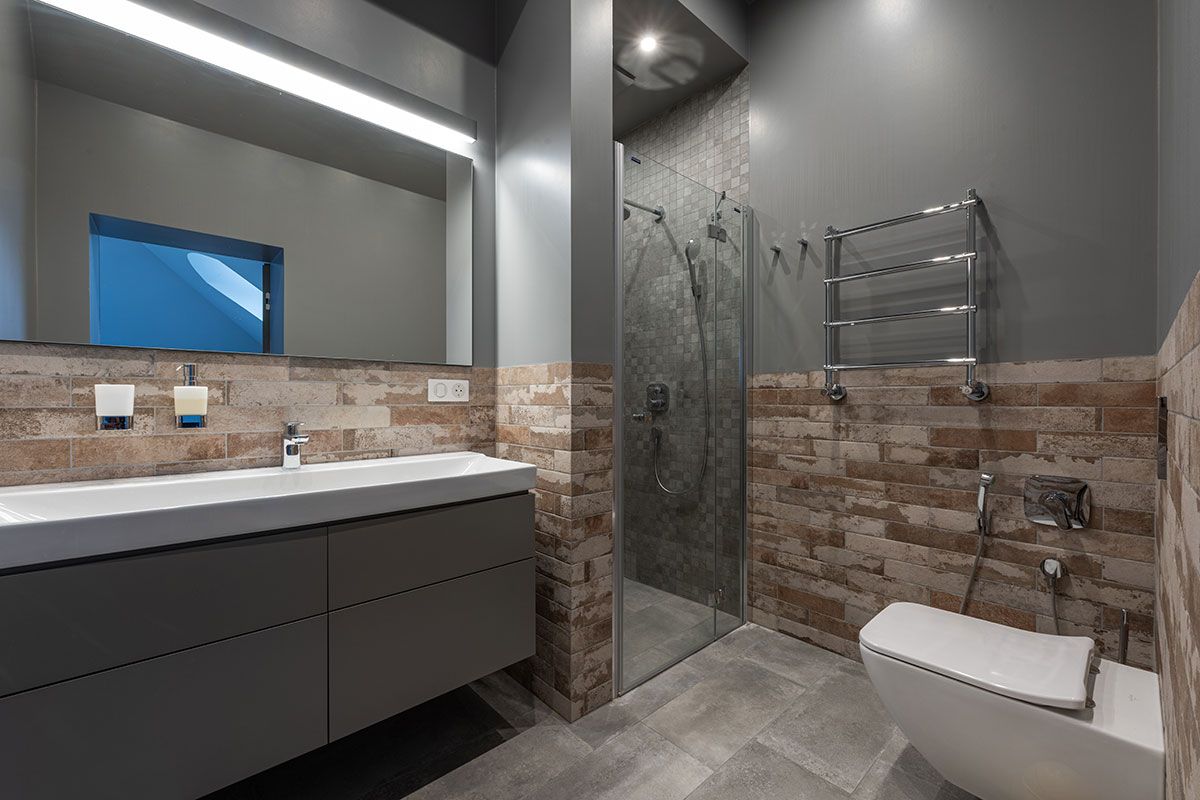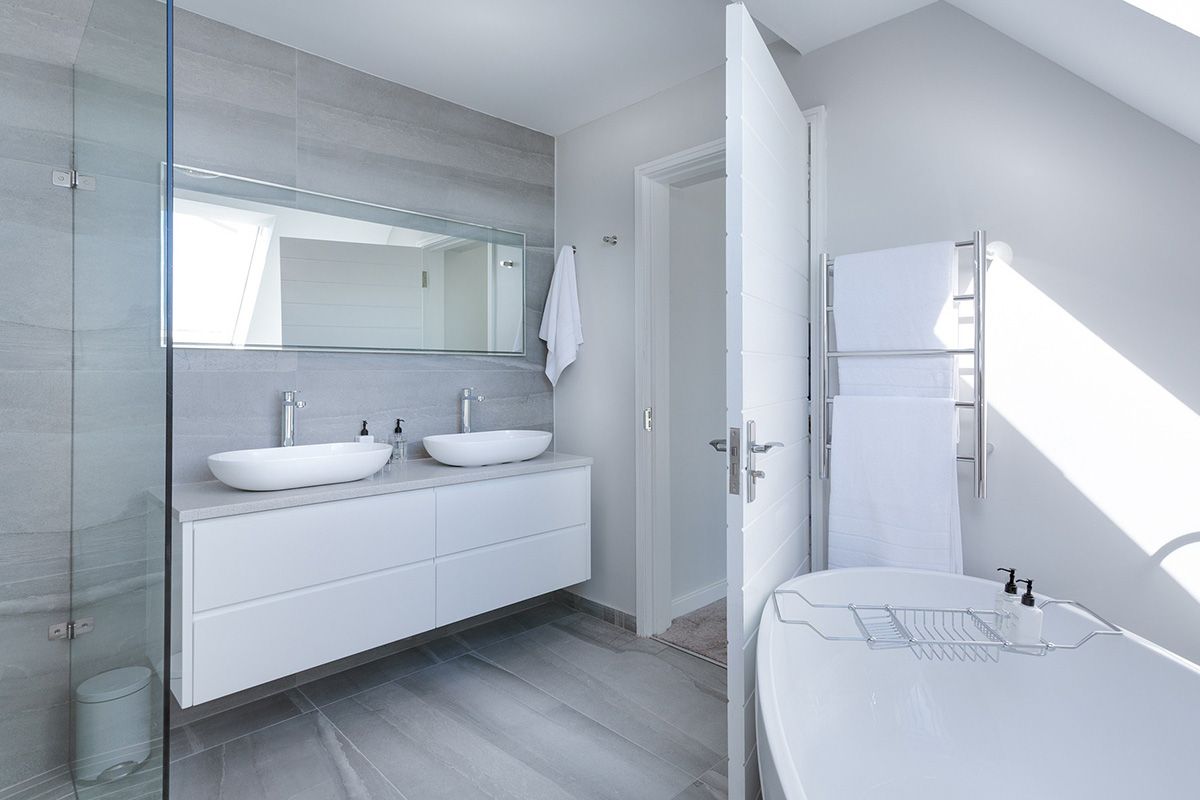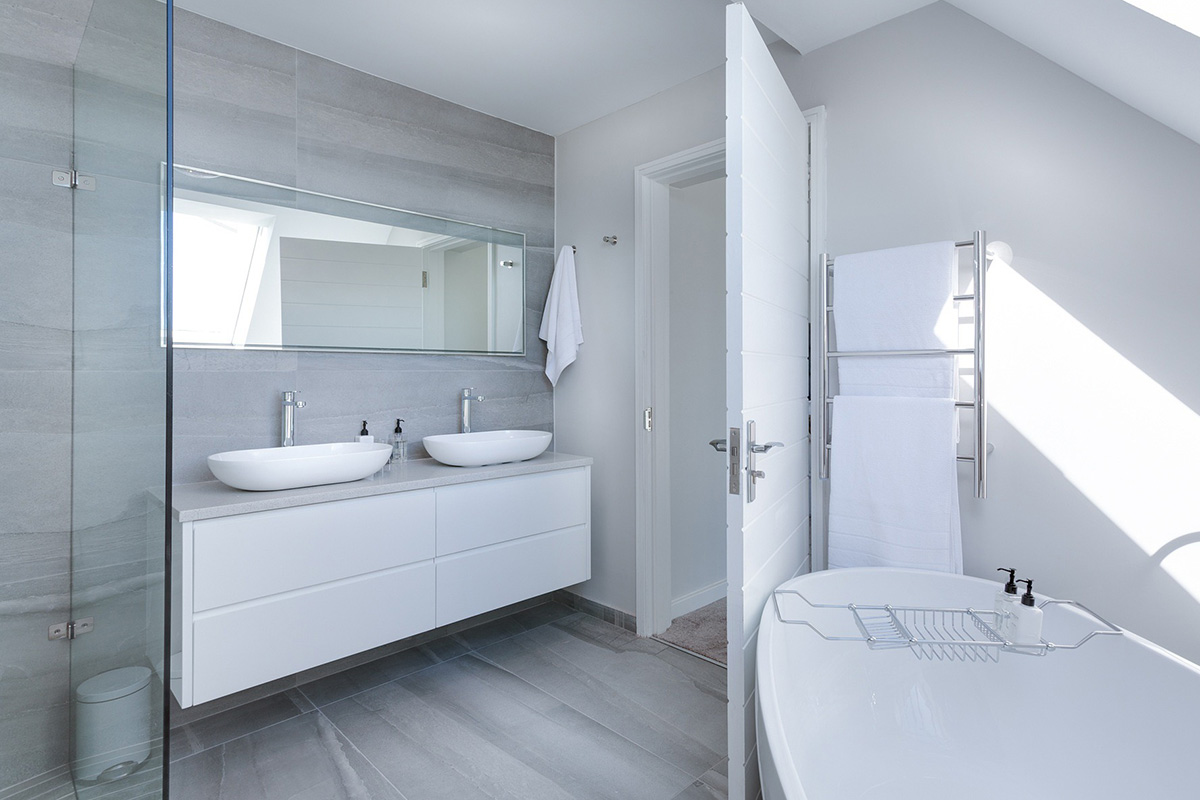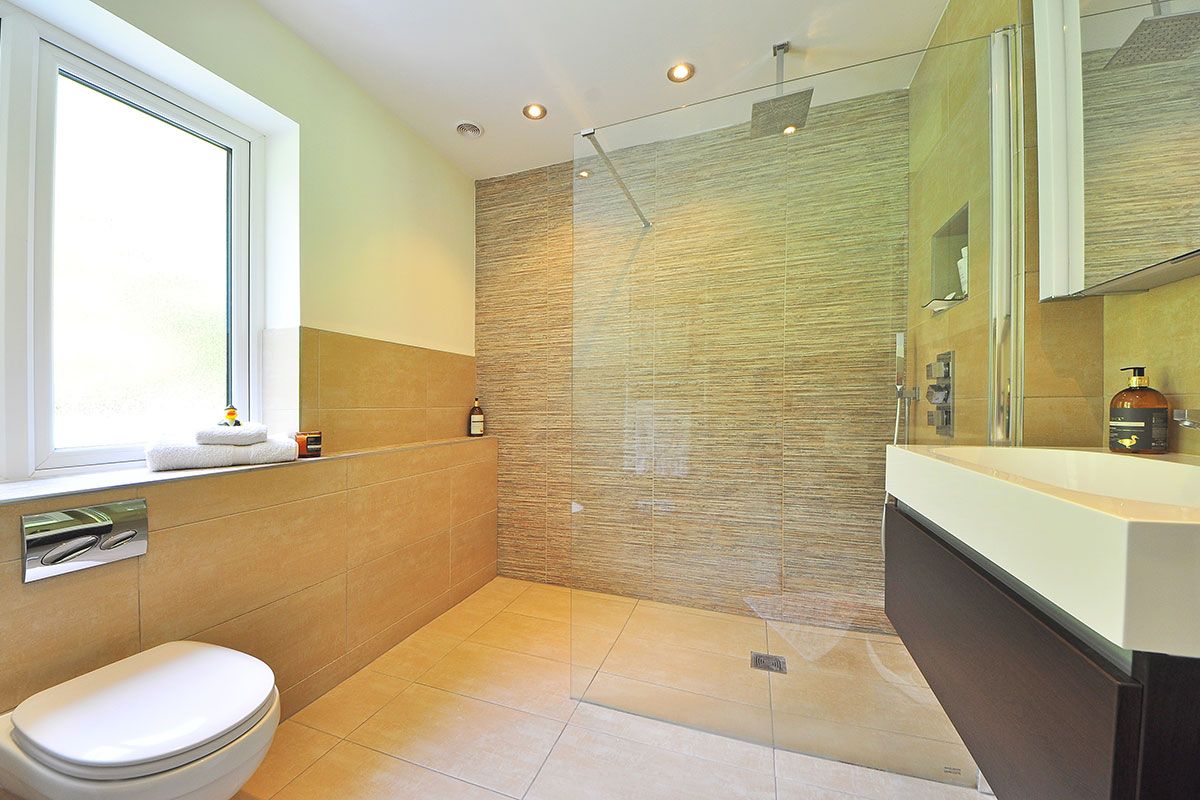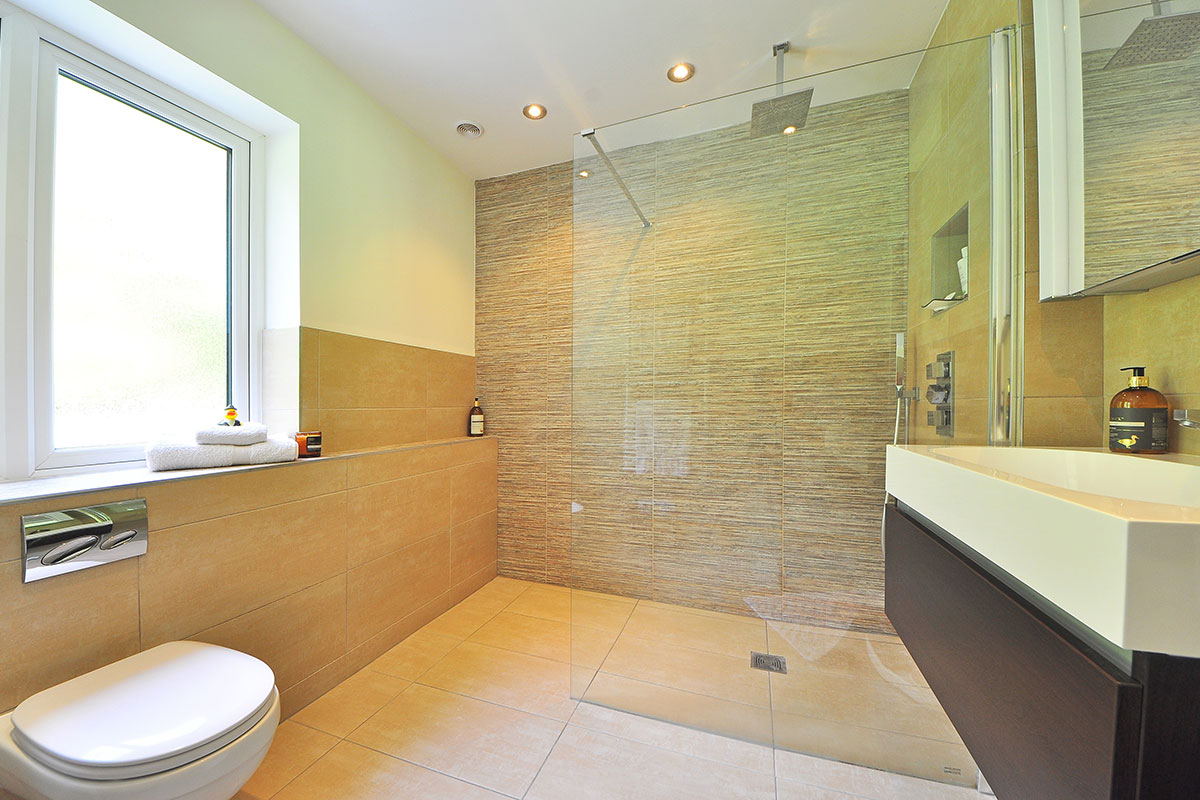Wet Rooms: Your Questions Answered
Wet Rooms: Your Questions Answered
Imagine stepping into a luxurious, seamless shower experience. No more bulky shower trays, just a beautifully designed, fully waterproofed space that oozes modern elegance. That’s the beauty of a wet room. But for UK homeowners, wet rooms can also be a source of confusion. Is a wet room right for your home? How much does it cost to install? What about waterproofing and regulations? Here at Infinity Wet Rooms, we understand that navigating the world of wet rooms can be daunting. That’s why we’ve compiled this comprehensive guide to answer all your questions. From space considerations and building regulations to cost factors and maintenance, this article will equip you with the knowledge you need to decide if a wet room is the perfect addition to your home. So, are you ready to transform your bathroom into a spa-like haven? Dive into the world of wet rooms with us!
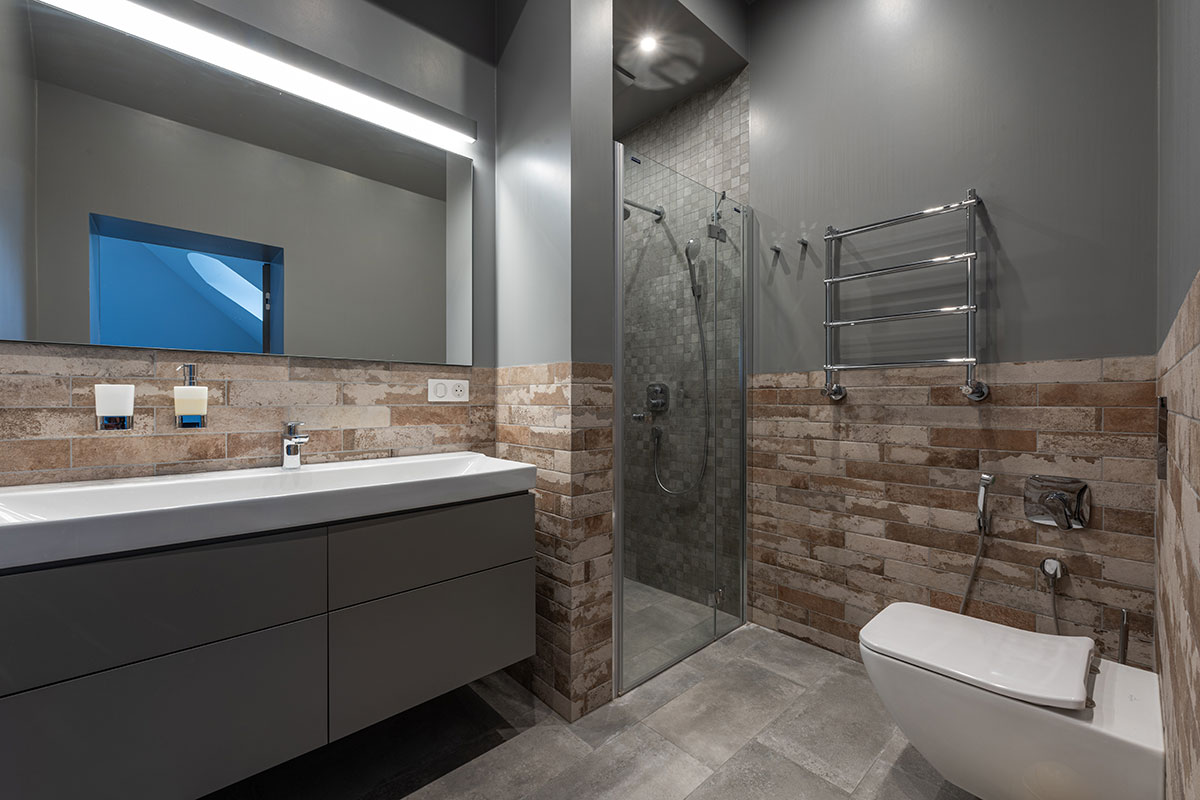
Wet Rooms – A Modern and Functional Approach to Bathroom Design
Imagine a bathroom where the shower seamlessly blends into the rest of the space, creating a minimalist and luxurious atmosphere. That’s the essence of a wet room – a fully waterproofed bathroom where the shower area is level with the rest of the floor.
Unlike a standard bathroom with a separate shower enclosure or bathtub, a wet room utilises a gentle floor slope that channels water towards a central drain. This eliminates the need for a shower tray and creates a sense of openness in your bathroom. Here are some key features of a wet room:
- Waterproofing: The defining characteristic of a wet room is its complete waterproofing. Walls and floors are treated with specialist membranes and materials to ensure water remains contained within the designated shower area and doesn’t seep into surrounding walls or floors
- Level Access Shower: A wet room eliminates the need to step over a shower tray, creating a level access shower area. This is particularly beneficial for individuals with mobility limitations or those planning for future accessibility needs in their homes.
- Open Drainage System: The gently sloping floor in a wet room directs water towards a central drain which efficiently removes excess water, preventing puddles and minimising the risk of moisture build-up.
- Modern Design: Wet rooms boast a sleek, minimalist aesthetic that complements modern bathroom design trends. The seamless design creates a feeling of spaciousness, which is particularly advantageous for smaller UK bathrooms.
Wet rooms offer a stylish and functional alternative to traditional bathrooms, but they are not for everyone. In the following sections of this blog article, we’ll explore the pros and cons of wet rooms to help you decide if they’re the right choice for your UK home.
What is a Wet Room? And What’s the Difference Between a Wet Room and a Normal Bathroom?
A wet room is a fully waterproofed bathroom space where the shower area is level with the rest of the floor. This eliminates the need for a shower tray and creates a seamless, contemporary showering experience. Unlike a standard bathroom where water is contained within a shower enclosure or bathtub, the entire wet room floor slopes gently towards a drain, allowing water to flow freely.
The key difference between a wet room and a standard bathroom lies in the waterproofing. Wet rooms require specialist waterproofing materials and techniques applied throughout the entire floor and lower wall areas. This ensures the space is completely sealed and prevents water damage from occurring
Here’s a table summarising the key differences:
| Feature | Wet Room | Standard Bathroom |
|---|---|---|
| Shower Tray | No | Yes |
| Floor Level | Shower area level with rest of floor | Shower area on raised platform (the shower tray) |
| Waterproofing | Entire floor and lower walls | Shower enclosure and surrounding areas |
| Drainage | Sloping floor with central drain | Drain within shower enclosure |
| Overall Design | Minimalist, seamless | Varied designs with potential bath and separate shower |
Are Wet Rooms a Good Idea?
Wet rooms offer a stylish and functional alternative to traditional bathrooms, but are they the right choice for your UK home? The answer depends on your specific needs and priorities. Here’s a breakdown of the pros and cons to help you decide:
Pros:
- Luxurious and Modern Design: Wet rooms create a sleek, minimalist aesthetic that can significantly enhance the look and feel of your bathroom. The seamless design creates a sense of spaciousness, which is particularly beneficial for smaller bathrooms
- Improved Accessibility: The level access design of wet rooms eliminates the need to step over a shower tray, making them ideal for individuals with mobility issues or those planning for future accessibility needs.
- Easier Cleaning: Wet rooms often have fewer crevices and corners compared to traditional bathrooms with shower enclosures. This can simplify the cleaning process, especially for those who dislike scrubbing shower doors and mildew-prone grout lines.
Cons:
- Cost: Installing a wet room can be more expensive than a standard bathroom refurbishment. The additional waterproofing materials and expertise required contribute to the higher cost.
- Potential Leaks: If not installed correctly, wet rooms pose a higher risk of water leaks due to the extensive waterproofing throughout the space. It’s crucial to choose reputable installers and ensure proper waterproofing techniques are followed.
- Planning Regulations: Building regulations in the UK require wet rooms to have adequate ventilation and drainage to prevent moisture build-up. Consulting a building professional is essential to ensure your wet room design complies with regulations.
Ultimately, whether a wet room is a good idea for you depends on your budget, design preferences, and lifestyle needs. Consider the pros and cons carefully, and weigh them against your priorities for your bathroom space.
Are Wet Rooms Expensive? Are They More Expensive Than a Normal Bathroom?
Yes, wet rooms tend to be more expensive to install compared to a standard bathroom in the UK. Here’s why:
- Waterproofing Materials and Techniques: Unlike standard bathrooms with limited waterproofing needs, wet rooms require specialist materials and meticulous application throughout the floor and lower wall areas. This ensures complete water sealing and prevents potential leaks and damage. These materials and the expertise needed to install them contribute to the higher cost.
- Shower Design: Wet rooms typically feature open or walk-in showers, potentially requiring additional elements like drains, showerheads, and control panels compared to a basic shower unit in a standard bathroom.
- Labour Costs: The intricate waterproofing process and installation of the shower elements can be more labour-intensive than a standard bathroom refurbishment. Also, the skill level of your contractors also needs to be appropriate to ensure that you don’t suffer installations further down the line.
Cost Comparison:
While a definitive price range is difficult due to variations in size, materials, and labour rates, expect to pay roughly 20-30% more for a wet room compared to a standard bathroom renovation [2].
Reducing Wet Room Costs:
- Size: Opting for a smaller wet room design can help minimize material and labour costs.
- Existing Plumbing: If your existing bathroom plumbing is in good condition and the layout is suitable, you may avoid significant relocation costs.
- DIY vs Professional Installation: While tempting, DIY wet room installation is not recommended due to the waterproofing complexity. Improper installation can lead to costly leaks and repairs in the future.
Remember: While wet rooms have a higher upfront cost, their sleek design and functionality can potentially increase the value of your property (more on that later).
Can Wet Rooms Be Installed Upstairs?
Installing a wet room upstairs in your home is possible, but it requires careful consideration and planning due to the potential for water damage. Here’s a breakdown of the key factors to keep in mind:
- Structural Reinforcement: Upstairs floors may require additional reinforcement to accommodate the weight of water and ensure the structure can handle the wet room installation. Consulting a structural engineer is crucial to determine if your floor can support the additional load.
- Waterproofing Expertise: Proper waterproofing is even more critical for upstairs wet rooms to prevent leaks affecting the ceiling of the room below. This necessitates employing highly skilled and experienced contractors who can ensure the job is done meticulously. Contractors should be using high-quality materials, which come with long guarantees, supported by approved installer status.
- Drainage: Installing efficient drainage becomes even more important upstairs. The drain must have the capacity to handle the water flow and be positioned strategically to avoid compromising the ceiling of the room below. In some cases, depending on the layout, installing a pump system may be necessary to ensure proper drainage.
Building Regulations:
Building regulations in the UK dictate specific requirements for upstairs wet rooms. These regulations focus on waterproofing standards, drainage systems, and ventilation to prevent moisture build-up and mould growth. Always consult a building professional to ensure your wet room design adheres to all relevant regulations.
Is an Upstairs Wet Room Right for You?
While upstairs wet rooms can be an attractive option, the additional planning, potential structural work, and specialist expertise required can significantly increase the cost and complexity of the project. Carefully weigh the pros and cons, considering factors like the condition of your floor structure, budgetary constraints, and the expertise of your chosen contractor before deciding if an upstairs wet room is the right choice for your home.
Are Upstairs Wet Rooms a Good Idea?
We explored the feasibility of installing wet rooms upstairs in the previous section. But are they a good idea for UK homeowners? Here’s a closer look at the pros and cons to help you decide:
Pros:
- Space Optimisation: Upstairs wet rooms can be space-saving solutions, particularly in homes with limited bathroom options. Their minimalist design can create a feeling of spaciousness, even in smaller bathrooms.
- Accessibility: Similar to downstairs wet rooms, upstairs wet rooms offer excellent accessibility benefits. The level access shower eliminates the need to step over a tray, making them ideal for those with mobility limitations.
Cons:
- Cost and Complexity: As discussed earlier, upstairs wet rooms require additional planning, potential structural reinforcement, and highly skilled waterproofers, all of which contribute to a higher cost and more complex installation process compared to downstairs wet rooms.
- Leak Risk: The risk of water leaks is a major concern with upstairs wet rooms. Even minor leaks can cause significant damage to the ceiling of the room below. This necessitates a strong emphasis on proper waterproofing and drainage systems, adding to the project’s complexity.
- Noise Concerns: The sound of water flow can potentially travel more easily through floors and walls compared to a downstairs wet room. Proper soundproofing measures may be necessary to minimize noise transfer, adding another layer of complexity to the project.
The decision of whether an upstairs wet room is a good idea depends on your individual circumstances. Carefully weigh the potential benefits against the costs, structural considerations, and potential drawbacks before making a final decision.
For some homeowners, the space optimisation and accessibility benefits may outweigh the challenges. However, for others, the potential risks and complexities may make a downstairs wet room or a more traditional bathroom a more suitable option. Consulting with a qualified structural engineer and a reputable wet room specialist is crucial before embarking on an upstairs wet room project.
Are Wet Rooms Hard to Keep Clean?
Maintaining a wet room can be surprisingly easy compared to a standard bathroom in a UK home. Here’s why:
- Minimal Grout Lines: Wet rooms typically feature large tiles or even seamless wet room wall panels that minimize grout lines. Grout is notorious for trapping dirt, mould, and mildew, and its reduced presence in a wet room design simplifies cleaning and reduces the potential for mould growth.
- Improved Drainage: The entire wet room floor slopes gently towards a central drain, allowing water to flow freely and preventing puddles or stagnant water that can attract mould and mildew growth. This efficient drainage system minimises the risk of lingering moisture and simplifies the cleaning process.
- Easy Access for Cleaning: The level access design of wet rooms allows for easier movement and better access to all areas of the shower space. This makes it easier to reach corners, walls, and behind fixtures for thorough cleaning.
However, it’s important to note that wet rooms still require regular cleaning to maintain their visual appeal and prevent soap scum build-up. Here are some key cleaning tips for wet rooms:
- Squeegee Regularly: After showering, use a squeegee to remove excess water from the walls and floor surfaces. This helps prevent water marks and reduces the chance of mould growth. Whilst you’re at it, you can use the squeegee on any glass surfaces to avoid water marks.
- Mild Cleaning Products: Avoid harsh chemicals, as they can damage the wet room’s waterproof surface. Opt for gentle cleaning solutions designed for bathrooms.
- Ventilate After Use: Ensure proper ventilation whilst and after showering to eliminate moisture and prevent condensation build-up. Open windows and use an extractor fan to promote air circulation within the wet room.
By following these simple cleaning practices, you can keep your wet room looking sparkling and fresh with minimal effort.
Are Wet Rooms Popular?
Wet rooms have grown in popularity amongst UK homeowners in recent years. Their contemporary aesthetic, improved accessibility features, and potential space-saving benefits are all contributing factors. Here’s a look at what’s driving the trend:
-
Modern Design Appeal: Wet rooms offer a sleek, minimalist aesthetic that complements modern design trends. The seamless design creates a sense of spaciousness, which is particularly appealing for homeowners with smaller bathrooms. A survey by the National Kitchen & Bathroom Association (NKBA) found that 68% of respondents renovating their bathrooms in 2022 desired a modern or contemporary style bathroom. Wet rooms perfectly align with this modern design preference.
-
Accessibility Advantages: The level access design of wet rooms eliminates the need to step over a shower tray, making them a safe and user-friendly option for individuals with mobility limitations or those planning for future accessibility needs. The UK population is aging, with an increasing number of people aged 65 and over. Wet rooms cater to this growing demographic seeking accessible bathroom solutions within their homes.
-
Space Optimisation Potential: In smaller UK homes, wet rooms can be space-saving solutions. By eliminating the bulky shower enclosure and shower tray, wet rooms create a more open feel and can make even a compact bathroom feel more spacious. Wet rooms also make a great option for smaller downstairs bathrooms that are tucked away, but can become even more useful.
However, it’s important to consider the potential drawbacks of wet rooms, such as higher installation costs and the importance of proper waterproofing to avoid leaks, before deciding if one is right for your home.
How Long Do Wet Rooms Last?
A well-designed, correctly installed, and properly maintained wet room in a UK home could last a very long time – potentially up to 50 years! Here’s what contributes to their longevity:
- High-Quality Materials: Wet rooms rely on specialist waterproofing materials and techniques throughout the floor and lower wall areas. Choosing high-quality materials that are resistant to moisture and wear is crucial for a long-lasting wet room. Impey; one of the UK’s leaders in wet room formers and waterproofing systems offers a lifetime guarantee on their products when installed correctly.
- Skilled Installation: Proper waterproofing installation is paramount for wet rooms. Hiring qualified and experienced professionals ensures the waterproofing is applied meticulously according to building regulations, preventing leaks that can damage the structure and shorten the lifespan of the wet room.
- Regular Maintenance: Like any bathroom, regular cleaning and maintenance are essential for keeping your wet room in top condition. This includes squeegeeing walls after use to prevent water marks, using appropriate cleaning products, and ensuring proper ventilation to prevent moisture build-up and mould growth.
By choosing high-quality materials, employing skilled professionals for installation, and following a proper maintenance routine, you can ensure your wet room lasts for decades to come.
Will a Wet Room Add Value to My Home?
Whether a wet room adds value to your UK home depends on several factors. Here’s a breakdown of the potential pros and cons to consider:
Potential Increase in Value:
- Modern Appeal: As discussed earlier, wet rooms boast a modern and stylish design that aligns with current trends. A 2023 study by Which? found that modern bathroom features are highly sought-after by potential buyers, with 72% of respondents willing to pay more for a property with a modern bathroom. A well-designed wet room can elevate the overall aesthetic of your bathroom and potentially increase its value to modern homebuyers.
- Increased Functionality: The ease of access and functionality offered by wet rooms, particularly for those with mobility needs, can be a significant selling point. An accessible bathroom can broaden your target market and potentially make your home more attractive to a wider range of buyers.
- Additional Bathroom: If the wet room is installed as an en-suite or an extra bathroom, it can add value similar to a standard additional bathroom. Studies by various estate agents and insurers suggest an additional bathroom can increase a property’s value by around 5%.
Considerations to Maximise Value:
- Professional Installation: Ensure proper waterproofing and drainage systems are installed by qualified professionals to avoid future leaks and potential damage. A poorly installed wet room can significantly detract from the value of your property.
- High-Quality Materials: Opt for high-quality, durable materials for the tiles, fixtures, and waterproofing elements. Using cheap materials can shorten the lifespan of the wet room and make it less appealing to potential buyers.
- Overall Design: While wet rooms offer a modern aesthetic, ensure the design complements the overall style of your home. A poorly designed wet room can clash with the existing décor and potentially decrease value.
Remember, the decision to add a wet room should be based on both its potential to increase value and whether it meets your own needs and preferences.
Key Considerations Before Installing a Wet Room in Your UK Home
Wet rooms offer a modern and functional bathroom design, but incorporating one into your UK home requires careful planning and consideration. Here are some key factors to keep in mind before deciding if a wet room is the right choice for you:
Space and Layout:
- Size: Wet rooms can be surprisingly space-efficient, particularly beneficial for smaller bathrooms. However, ensure there’s adequate space for showering, manoeuvring comfortably, and potentially positioning other bathroom fixtures like toilets and sinks.
- Existing Plumbing: The location of existing plumbing can influence the wet room’s layout and potentially impact installation costs. Consider how the new drainage system will connect to existing pipes.
Building Regulations and Waterproofing:
- Building Regulations Compliance: Wet room installations in the UK must comply with specific building regulations regarding waterproofing, drainage, and ventilation. Consulting a building professional ensures your design adheres to these regulations and avoids potential issues during construction.
- Waterproofing Expertise: Proper waterproofing is paramount for a wet room’s success. Hiring reputable and experienced installers who specialise in wet room installations is crucial. Their expertise ensures a watertight seal throughout the designated wet area, preventing leaks and potential structural damage. Competent and diligent installers will use materials that come with manufacturers’ guarantees, and will also likely offer their own (ideally insurance-backed) warranty on workmanship.
Cost and Maintenance:
- Budget: Wet rooms tend to be more expensive than standard bathroom renovations due to specialist materials, waterproofing processes, and potentially structural reinforcement required, particularly for upstairs installations.
- Maintenance: While generally easy to clean due to minimal grout lines and efficient drainage, wet rooms still require regular cleaning and maintenance to prevent soap scum build-up and mould growth. Following proper cleaning routines and ensuring adequate ventilation are essential for maintaining a healthy and visually appealing wet room.
Additional Considerations:
- Ventilation: Effective ventilation is crucial to remove moisture and prevent condensation build-up in your wet room. Installing extractor fans or windows that allow for proper air circulation is essential.
- Accessibility: Wet rooms excel in accessibility due to their level access shower design. This can be a game-changer for those with mobility limitations or planning for future accessibility needs. If a wet room conversion is being undertaken to aid mobility, depending upon exact circumstances, VAT relief may be possible (you can find out more about that here).
- Downstairs vs. Upstairs: While wet rooms can be installed upstairs, additional factors like structural reinforcement and potential noise concerns need to be addressed, making them generally more complex and expensive than downstairs installations.
By carefully considering these factors, you can make an informed decision about whether a wet room is the right choice for your UK home. Weighing the potential benefits against the considerations outlined above will help you determine if a wet room aligns with your budget, space limitations, and desired functionality.
Contact Us
Wet rooms offer a stylish and functional solution for modern UK bathrooms. However, careful planning and expert guidance are crucial for a successful installation. By considering the factors explored in this article and consulting with qualified professionals like Infinity Wet Rooms, you can transform your bathroom dreams into a reality. But before you embark on your wet room journey, have you considered all the design possibilities? From choosing the perfect tiles to incorporating clever storage solutions, the design options for wet rooms are endless. So, unleash your creativity and get ready to design a wet room that perfectly complements your style and functionality needs.
For a free initial design consultation, simply call Infinity Wet Rooms on 0800 148 8088, or complete the form below.
